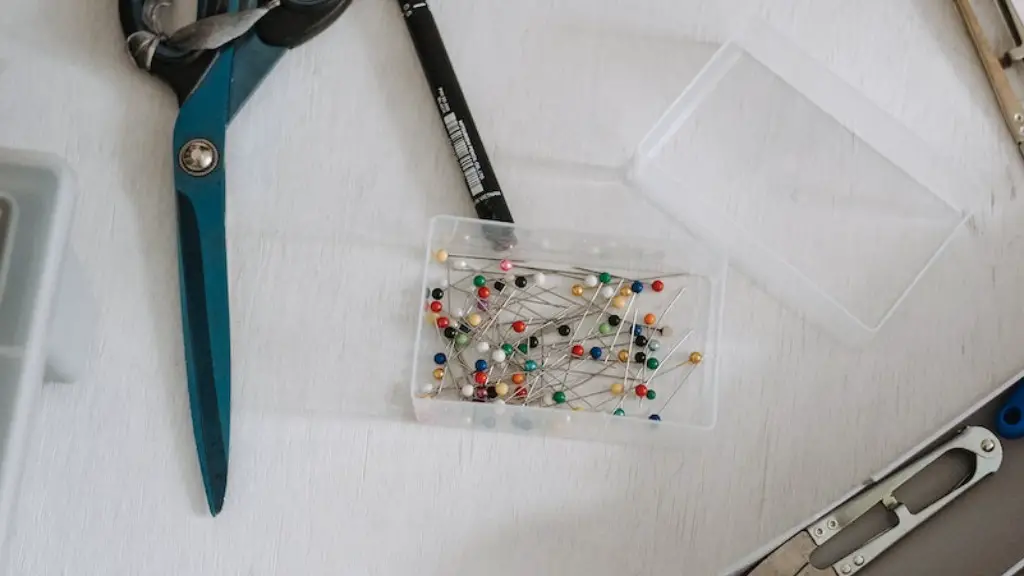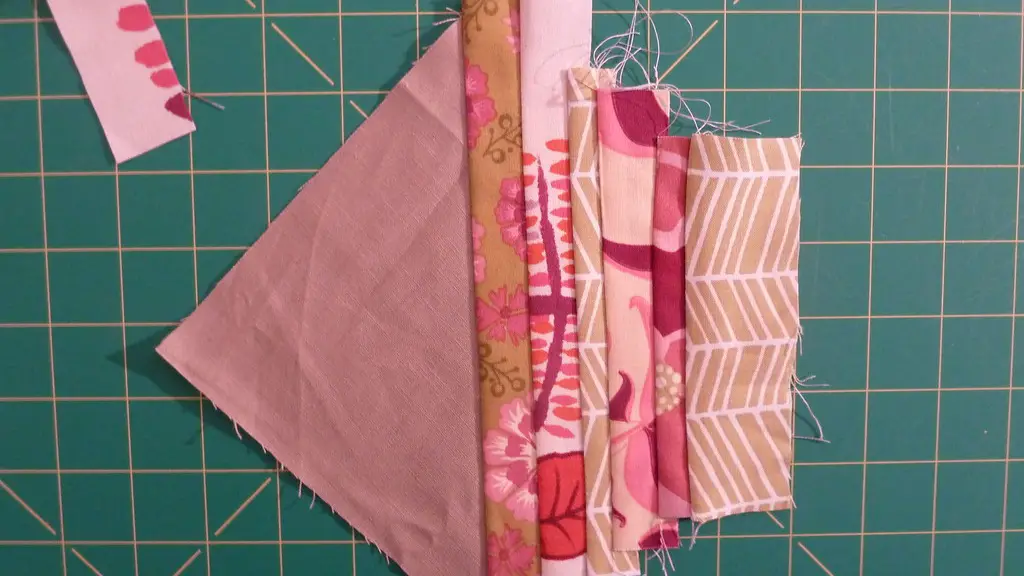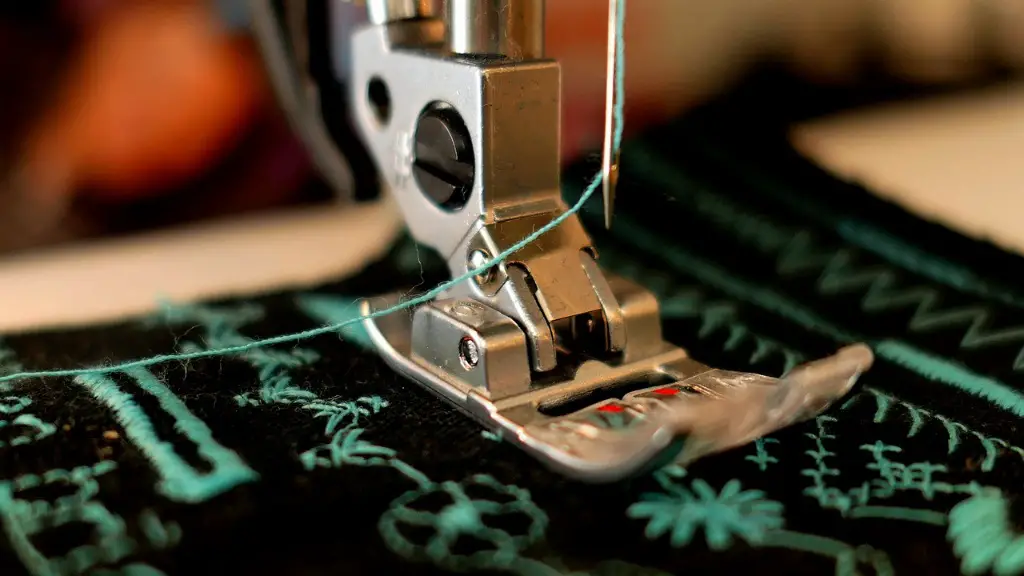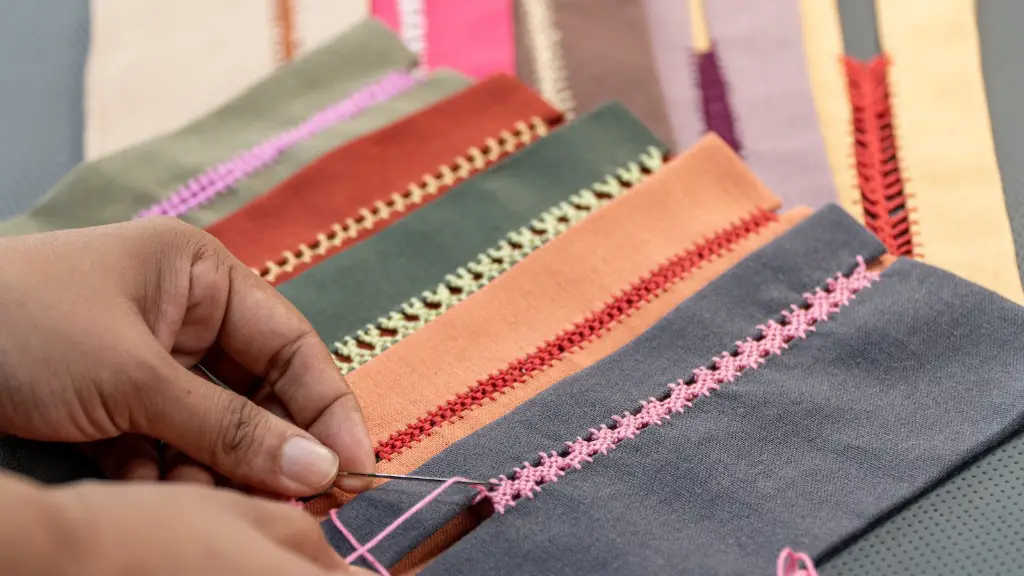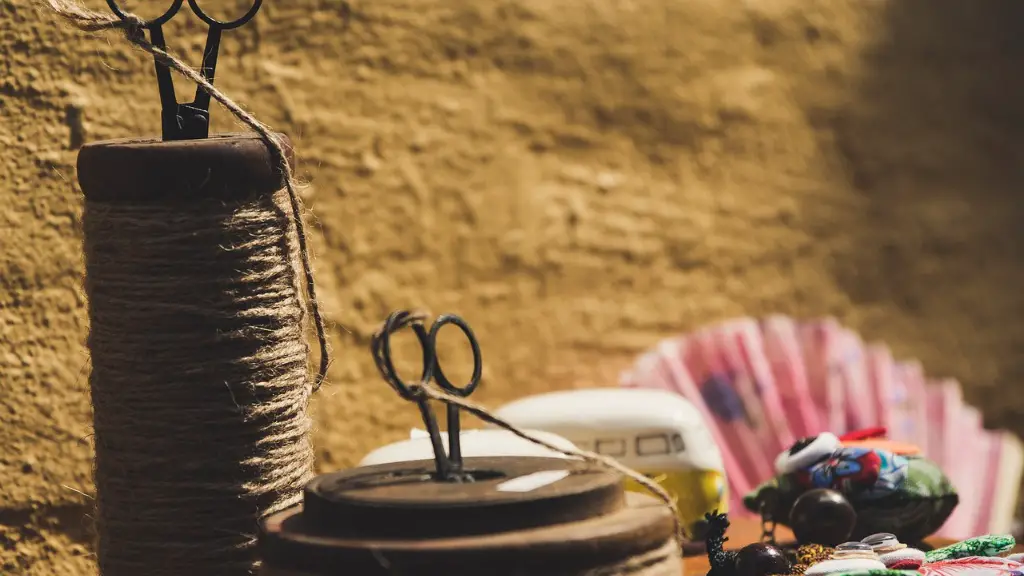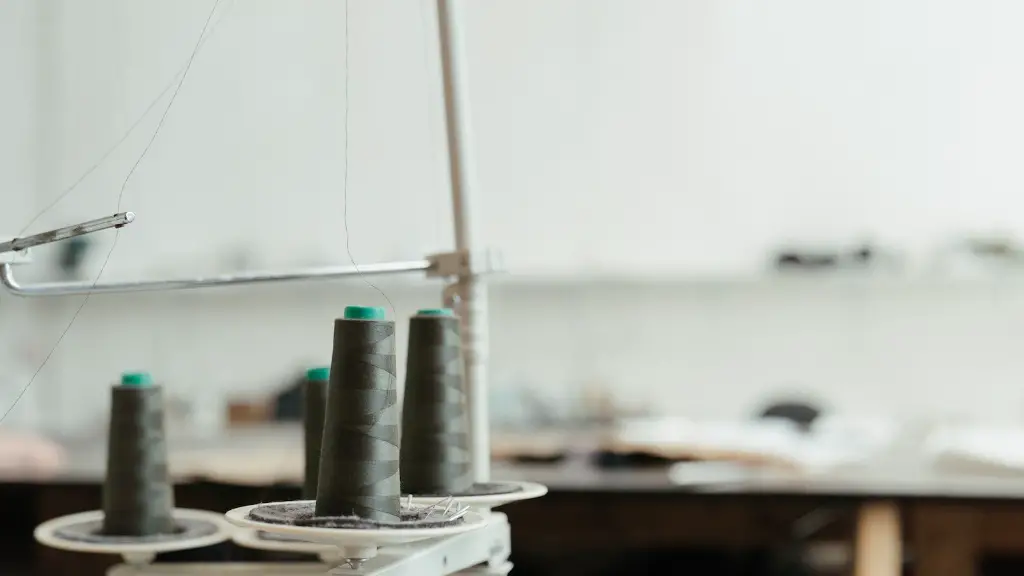Knowing how to get sewing machine oil out of fabric can save a lot of money, since it is usually expensive to replace fabric. Sewing machine oil is an important lubricant for the sewing machine, but it can also end up on fabric if one is not careful. Fortunately, there are several easy methods one can use to get sewing machine oil out of fabric before it permanently damages it.
The first step is to carefully read the fabric content tags before starting. Cotton, linen, and other natural materials are relatively unaffected by sewing machine oil, while other fabrics such as rayon, silk, wool, and velvet may be more sensitive to the oil’s effects. Also, it is important to test the cleaning agents on a scrap piece of the same fabric before using it on the affected area.
When cleaning the affected area, it is important to be gentle. Scrubbing the fabric will push the oil deeper into the fibers and make it even more difficult to remove. Instead, use a gentle circular motion until the oil has been removed.
Using Chemicals
There are many chemicals one can use to get sewing machine oil out of fabric. One of the most popular chemicals is acetone, which is often found in nail polish removers and paint thinners. It is important to remember to always follow the directions on the chemical product and never use acetone on fabrics that cannot handle it. For fabrics such as rayon and silk, it may be better to use a chemical specifically designed to remove oil stains.
Another chemical solution to try is liquid dishwashing detergent. Before using it, make sure to mix it with water and then apply it to the affected area. Rub the fabric gently with the detergent mixture and allow it to sit for fifteen minutes. Once the time is up, rinse the fabric with warm water and launder as usual.
Finally, another option is to mix equal parts white vinegar and water in a bowl. Apply the solution to the affected area and allow it to sit for fifteen minutes. Rinse the fabric with cold water, and then launder as usual.
Using Natural Remedies
If one does not have access to chemical solutions or prefers to use a more natural method, there are several natural remedies one can use. One of the most popular natural remedies is baking soda, which can be made into a paste with the addition of a few drops of water. Apply the paste to the affected area and rub gently. Allow the paste to sit for fifteen minutes and then rinse with cold water.
Another popular natural remedy for getting sewing machine oil out of fabric is salt. Mix salt with white vinegar and water until a paste forms. Apply the paste to the affected area and allow it to sit for fifteen minutes. Then rinse the fabric with cold water and launder as usual.
Finally, one can also use lemon juice, which is a natural acid that can help break down the oil. Mix the juice from half a lemon with two tablespoons of water. Apply the mixture to the oil stain, and then rub gently. Allow it to sit for fifteen minutes and then rinse with cold water, followed by laundering as usual.
Using Soap
One of the most common methods for getting sewing machine oil out of fabric is using soap. Start by wetting the affected area and then rub a mild soap onto it. Rub the fabric gently and then rinse with lukewarm water. Finally, launder the fabric as usual.
It is also possible to use laundry detergent to remove oil stains from fabric. Mix one part detergent with one part warm water and then apply it to the affected area. Rub it gently and then rinse with lukewarm water. Finally, launder the fabric as usual.
Another option is to mix half a cup of laundry detergent with a tablespoon of white vinegar. Apply the mixture to the affected area and allow it to sit for twenty minutes. Then rinse with cold water, followed by laundering as usual.
Using Heavy-Duty Cleaners
For tougher oil stains, it may be necessary to use a heavy-duty cleaner. Many of these products contain strong chemicals and should be used with caution. Before using one of these products, it is important to carefully read the warning labels and follow the directions closely.
One popular product is a degreaser, which can remove even the toughest grease and oil stains. Mix one part degreaser with three parts warm water and then apply it to the stained area. Rub the fabric gently and allow it to sit for fifteen minutes. Then rinse with lukewarm water and launder as usual.
Another product that can be used is an oil remover. Mix one part of the oil remover with three parts lukewarm water and then rub it onto the affected area. Allow it to sit for fifteen minutes and then rinse with lukewarm water. Finally, launder the fabric as usual.
Deodorizing the Fabric
Once the oil stain has been removed, it is important to deodorize the fabric. This can be done by washing it with a fabric deodorizing product or by adding baking soda or vinegar to the laundry cycle. These natural products are not only effective at removing odors, but also help to reduce static electricity, soften fabric, and color-set fabrics.
Another option is to add a few drops of essential oils to the laundry cycle. Essential oils can be used to add a pleasant scent to the fabric and can even help to naturally remove odors. Some of the most popular essential oils are lavender, eucalyptus, and lemon.
Finally, one can also use white vinegar in the wash cycle to help eliminate odors. The vinegar works to neutralize the smell and help to leave the fabric smelling clean and fresh.
Drying the Fabric
To ensure that the fabric is completely oil and odor-free, it is important to dry it properly. Avoid drying fabrics in direct sunlight and opt to dry the fabric indoors, either on a clothesline or in a drying rack. This will help to keep the fabric from fading and retain its original color and shape.
Another option is to dry the fabric in a tumble dryer. To do this, select the lowest heat setting and add a few dry towels to the dryer to help absorb the moisture from the fabric. Make sure to take the fabric out as soon as it is finished in order to avoid shrinkage.
Finally, one can also air dry the fabric indoors. Hang the garment on a hanger and hang it up in an area with good air circulation. Allow the fabric to dry completely before storing or wearing it.
